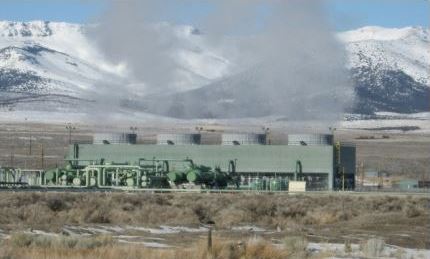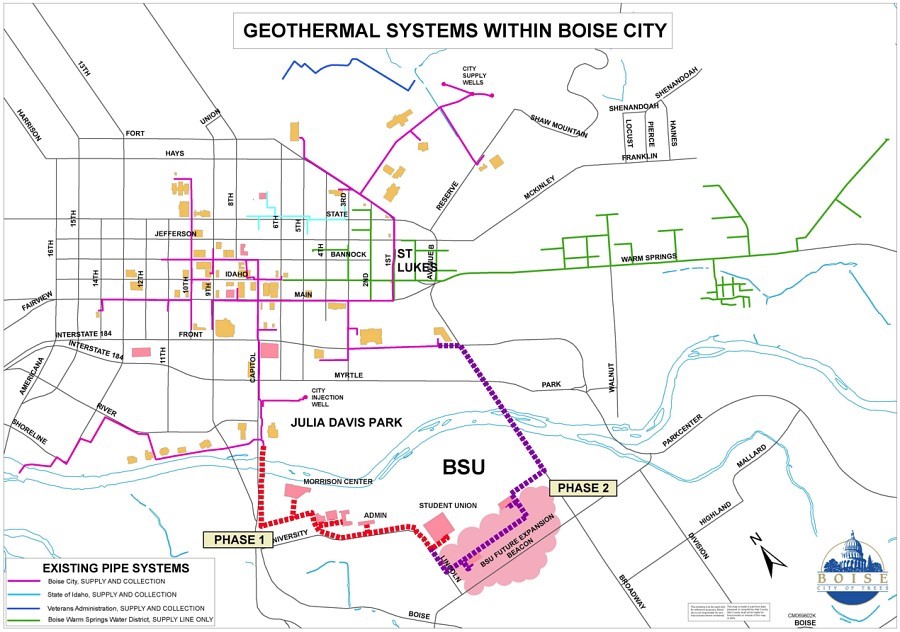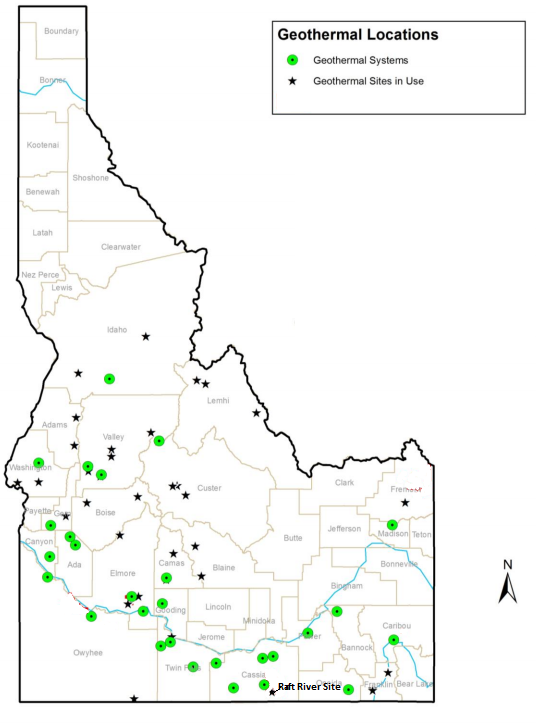
Geothermal is a renewable energy resource that offers long-term, sustainable and non-consumptive sources of power generation. Geothermal power plants are considered to be a base load power source because they can be operated 24 hours per day, 7 days a week, or whenever they are needed, unlike intermittent power sources like wind and solar energy. Idaho uses its geothermal resources for heating buildings, generating electricity, growing plants and aquatic species, and for recreation.
Idaho is one of seven states with utility scale electricity generation from geothermal energy. Idaho’s volcanic landscape allows for some of the best geothermal potential in the nation, much of it in the southern portions of the State.[1 ] Ormat manages Idaho’s only operating commercial geothermal power plant, the Raft River Enhanced Geothermal System Project, located in Cassia County. The Raft River plant provides about 11 MW of net capacity.[2]
In addition to electric generation, direct use of geothermal waters is the oldest, most versatile, and most prevalent utilization of geothermal energy.[3] Idaho has over 1,000 wells and 200 springs. Wells that have a bottom hole temperature more than 85 degrees Fahrenheit and less than 212 degrees Fahrenheit are designated as low-temperature geothermal (LTG) resource wells.[4] These low-temperature geothermal resources are used for space heating, aquaculture, greenhouses, and recreation throughout the State.
Geothermal heating of buildings has a long and rich history in Idaho. Boise is home to the nation’s first geothermal district heating system, Warm Springs Heating District, which was built in the late 19th century and continues to service over 300 customers in the East End neighborhood of Boise.[5] The City of Boise’s geothermal heating utility delivers naturally heated water through over 20 miles of pipeline to more than 6 million square feet of building space. The Idaho Statehouse is the only geothermally heated capitol building in the nation. District heating is also currently being used for space heating at several of the Boise State University campus buildings.[6][7]
There are two methods to extract energy as heat from geothermal water.
Method 1 – the open-loop system – works like this:
- A well is drilled into a geothermal aquifer.
- Geothermal water is withdrawn from the well.
- The water circulates through the system, power plant or individual home.
- Heat radiates from the distribution system (pipes in the floors or radiators) and warms the home.
- Spent water is either reinjected into the aquifer or discharged away from the house.
Method 2– the closed-loop system, uses this approach:
- A well is drilled into a geothermal aquifer.
- Carbon steel or copper piping is placed in the well bore and down into the water (this is known as the downhole heat exchanger).
- Piping connected to the downhole heat exchange is run into the house, under the floorboards or in radiators.
- The piping is filled with water.
- The ends of the pipe are joined together forming a closed loop.
- The water circulates through the piping, usually with the aid of an in-line pump. As the water inside the loop passes through the piping in the well, the heat from the surrounding water is transferred into the closed loop. As the water circulates through the piping in the home, the heat is released.

Direct Use means that the heat energy from geothermal water is utilized through either direct contact or through heat exchange for a specific process. Examples include:
- heat exchangers extract thermal energy which is transferred to air and used to heat homes, businesses, and public buildings,
- hot water flows through radiators in a home and heats the rooms,
- geothermal water is put directly into raceways and fish are raised,
- hot water goes into a pool for swimming, and
- geothermal circulates through pipes in a greenhouse and heat radiates for the plants.

DETAILED HISTORY
RECREATION
- VisitIdaho.org – hot springs page – sponsored by the Idaho Dept. of Commerce and Labor
AQUACULTURE
GREENHOUSES
- Edwards Greenhouse, Boise, established in 1930
- Mountain States Plants, Buhl, ID facility
- Ward Greenhouse, Garden Valley, ID
- Green Canyon Hot Springs, NewDale, ID
DISTRICT HEATING
POWER GENERATION
LOCAL RESOURCES
- INL Frontier Observatory for Research in Geothermal Energy (FORGE)– Idaho National Laboratory
- Center for Advanced Energy Studies (CAES)
NATIONAL RESOURCES
- Bureau of Land Management
- Geo-Heat Center, Oregon Institute of Technology
- Geothermal Energy Association
- Geothermal Exchange Organization
- Geothermal Education Office
- Geothermal Resource Council (GRC)
- Great Basin Center for Geothermal Energy
- National Renewable Energy Laboratory (NREL)
- Stanford University Geothermal Program
- DOE Office of Energy Efficiency and Renewable Energy (EERE)
 Official Government Website
Official Government Website